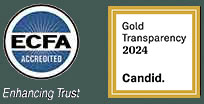Buildings are incredible tools for ministry. But often, they need a few tweaks to make them more effective for your church’s mission. Here are six questions every church planter should ask about their meeting space.
1. Can a visitor navigate your building easily?
Let’s say I’m a brand-new visitor with a family of five of various ages. Do I know what door to walk into from the parking lot? Once I get inside, is it obvious where the bathrooms are? How about Kid’s Ministry? Is the sanctuary clearly marked? If I have questions, is there something telling me where to go to ask those questions?
When a new visitor first checks out your church in person, they don’t know where to go. Give them good way-finding signage on the walls or hanging from the ceiling. Make sure the font is large enough to be seen from the front entry. A new person may already feel awkward walking into an unfamiliar place. More than anything else, they need to know where to bring their kids and where to find the bathrooms. Signage goes a long way to making a person feel comfortable.
2. What story are you telling without spoken words?
I know you’ve got amazing greeters that are well-trained. But let’s pretend that I walk into your building on a Sunday morning, and not a single person talks to me. I just wander around before or after the service. What will I learn about your church from what is on your walls or screens? That’s the story you are telling me. We must steward the spaces God gives us to gather his people weekly for worship, discipleship, meetings, and ministry for his glory and our community’s good. Click To Tweet
You can effectively tell me three things about your church in the lobby. You may want me to know how to get connected. Maybe you want me to know about your vision or mission, or that church planting is important to you. This can be accomplished through an engaging image, a grouping of words, or some sort of infographic. There’s a story you’re telling your guests. Is it an accurate reflection of the church?
3. Does your building encourage community?
Have you ever visited a church where the lobby felt like a cramped hallway space? When we built a new building, we created a massive lobby accessible from lots of doors. Think through the main pathways of your building. What’s the check-in process like for kids? Do you have room for coffee kiosks? Are their side pockets and nooks with tables, chairs, or couches for people who don’t feel comfortable standing around but want to linger?
All pastors would say that they don’t want people going to a service and immediately leaving. So do all you can to encourage people to hang around and talk before and after the gathering by having enough square footage and varying types of furniture.
4. When was the last time you updated your common areas?
While we’re on the subject of your lobby, when was the last time your common areas were updated? Common areas are the lobbies, main hallways, kid’s check-in, and even the space just outside your main entry doors on the sidewalk. If you have outdated information on the walls, it’s been too long. If I can point to an object and say, “this was done in the 70s, 80s, or 90s,” it’s been too long.
New buildings are expensive. Updating an existing building may not even require a construction permit and is especially effective when a church enters a new season of growth. Even a classic old building can be tastefully updated to cause visitors to say, “something new is going on here, and I want to check it out.” There’s a story you’re telling your guests. Is it an accurate reflection of the church? Click To Tweet
5. Does your kid’s ministry area feel clean, safe, and recently updated?
It’s one thing to have an outdated lobby; it’s a whole other issue to have an obsolete kid’s area. This area needs regular painting, fixing, new flooring, and new furniture every five to seven years—especially in a growing church with many kids. Old, worn-out things look dirty and feel unsafe to parents. Clean, fresh, and new things signal to parents that their children will be safe.
6. Are your key rooms rightly sized?
The life cycle of a church and even a community causes demographic shifts. Along the way, the needs of your church change. Maybe you’ve developed some solid mid-size gatherings for students and adults during the week, but aside from the sanctuary, your biggest room barely holds 50 people. You might need to knock down a couple of classroom walls to get yourself a space that would hold 200.
The point is that the physical needs of a church change over time. You have options; use them. Roll with the changes and update your old building again and again as needed. Reallocate the purpose of each space or increase square footage when other options have been exhausted.
These are just a few things to think about with your church building. We must steward the spaces God gives us to gather his people weekly for worship, discipleship, meetings, and ministry for his glory and our community’s good.










